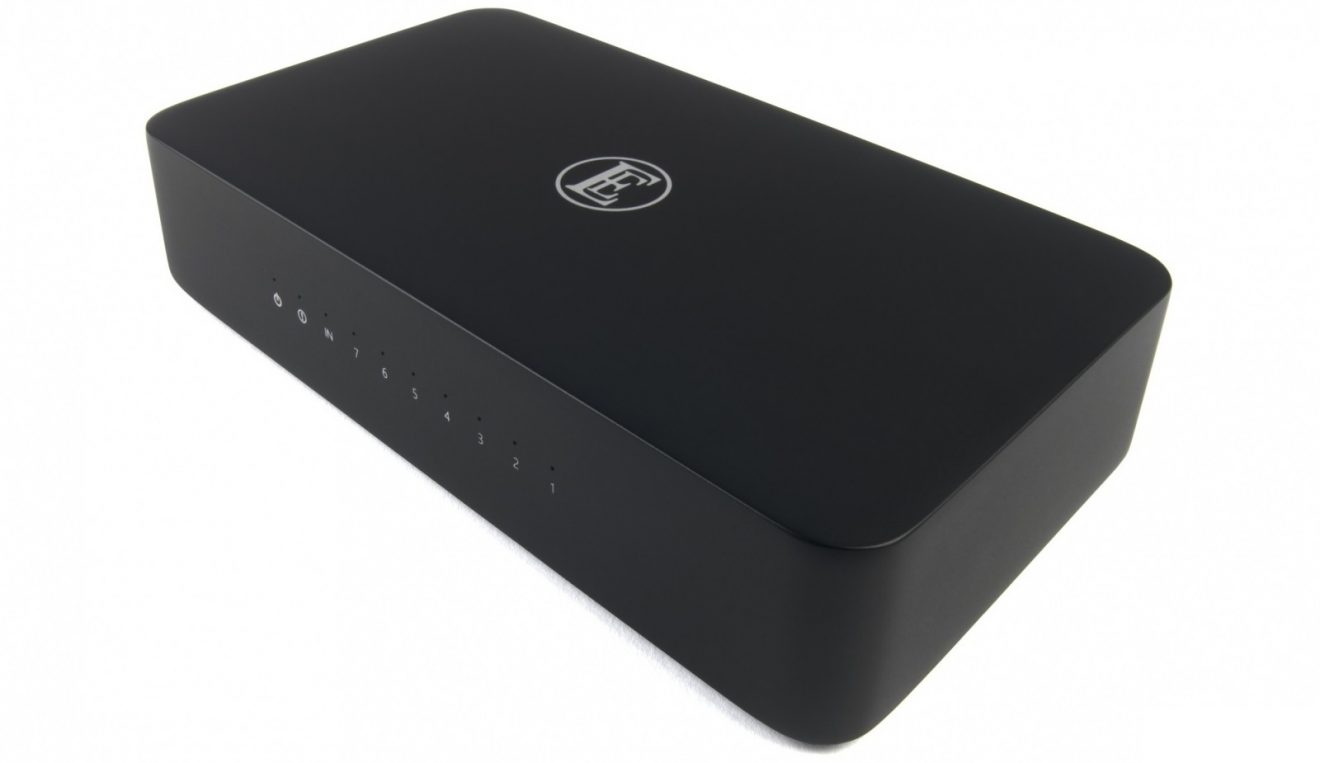English Electric 8Switch is tested in this review which belongs to the Audiophile Switches category. This is a relatively young product group that is enjoying increasing interest, but is also subject to intense debate. Many people – especially on forums and in social media groups – think something about it. But significantly fewer people actually listened (properly) to it. And the latter may be the most important requirement if one wants to say something about it in terms of content. Whether that is positive or negative. Mostly positive by the way, because bits – as we now know – are indeed bits, but with digital audio it increasingly turns out to be turning much more than just bits.
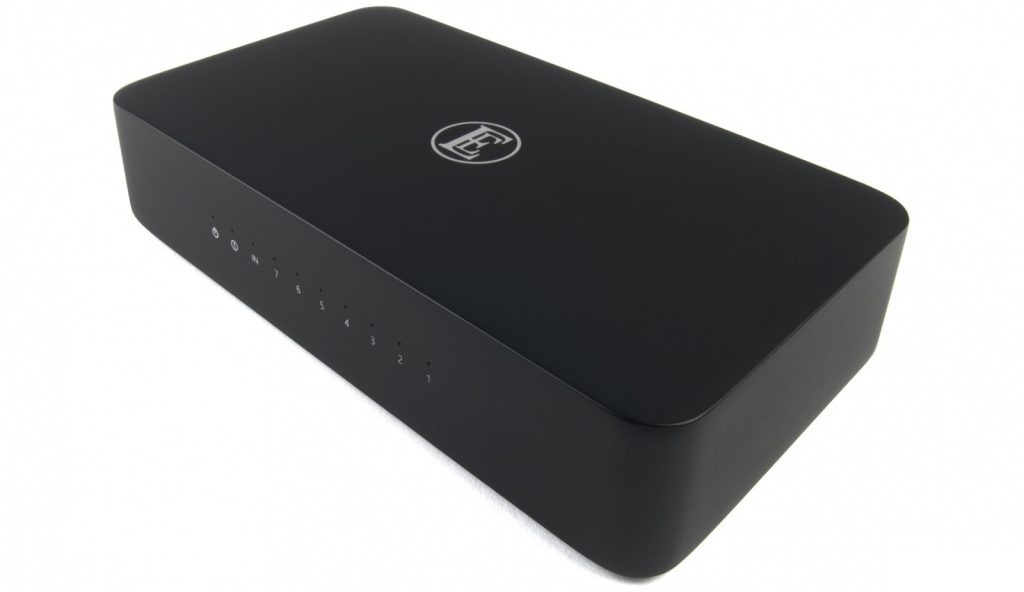
Audiophile Switches, do we need them?
I predicted years ago that it can make sense to work with an audiophile switch even in a well-executed wired network audio system. Computers – due to the large amount of noise they generate – simply do not mix very well with hi-fi, and data networks turn out to be doing a dubious contribution through RFI radiation. I am not making that up myself, it has now been extensively documented in many international articles. But the mores meanwhile is that ‘serious’ streaming must be done via an (preferably audiophile) Ethernet cable, given the lower stability of the WiFi signal that is often shared with roommates. And in order to stream wired we always need something computer or network-like somewhere.
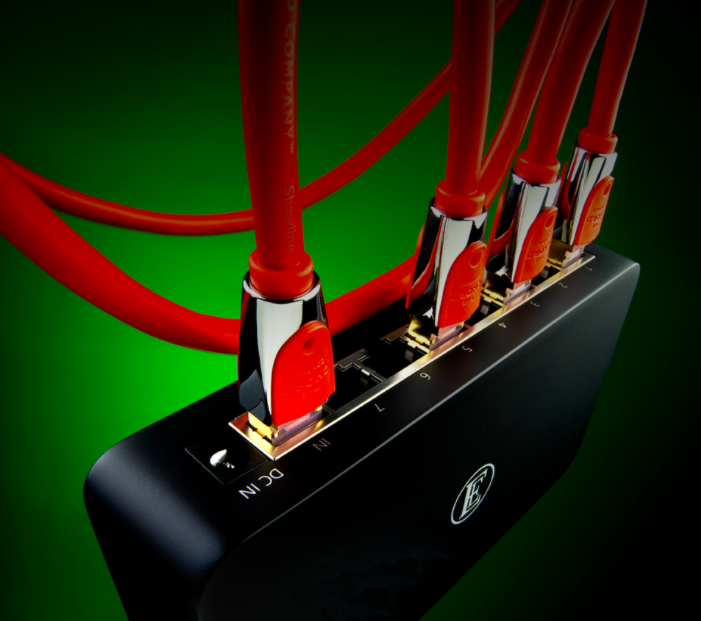
Why have I dropped the word ‘cable’ a few times now? Because of course you can also stream wirelessly. Via Bluetooth or AirPlay, from a smartphone or tablet to your streamer, or directly from the wireless router via WiFi. If you listen to music that way, you don’t need an audiophile switch for the time being, because it should be used between the router and your streamer. But for those who do stream wired, the use of an audiophile switch may offer a valuable and relatively affordable upgrade.
English Electric 8Switch
English Electric is a new company that was set up especially for the sale of this switch by The Chord Company, the Amesbury-based English cable manufacturer. From a marketing point of view, it might have been more sensible to use the reputation they have built up with their cables for this switch as well, but we are dealing here with a typical example of British courtesy. To avoid name confusion with the English audio company Chord Electronics, it was decided to offer this product under a different brand name. And then I don’t even think English Electric is that crazy choice, because it involuntarily evokes associations with traditional brands from the golden years of hi-fi.
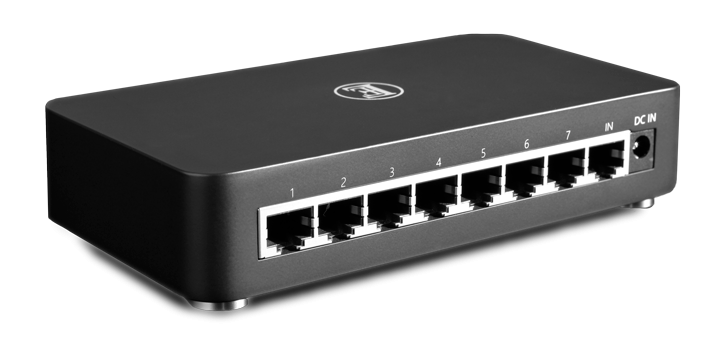
The 8Switch is not the first audiophile switch on the market. You could even say that The Chord Company has taken its time. The success of the Silent Angel Bonn N8 switchfrom the Chinese company Thunder Data from Zhuhai inspired a number of manufacturers to also launch a switch in the more popular price range. In addition to the Bonn N8, you can choose from the NuPrime Omnia SW-8, which I have not listened to, and this English Electric 8Switch. The added value of the English Electric 8Switch is not only in the better housing and power supply, but also in the included Chord Company C-Stream ethernet cable of 75 centimeters. By the way, Chord Company itself says ‘Streaming Cable’ because their ethernet cables are built slightly differently than bidirectional ethernet cables and are therefore better equipped for audio use. Because I have an even better Ethernet cable myself, I leave the C-Stream in the box, but I know from experience that it favors OEM Ethernet cables. A nice bonus.
Technic
The English Electric 8Switch (where the 8 stands for the number of available ports) has been developed under license on an (already very high-quality) platform from Zyxel that was improved by Thunder Data, the makers of the Silent Angel Bonn N8. So the build is practically the same, with strategically placed RFI absorbing material and the addition of an extremely accurate (0.1ppm) temperature-controlled TCXO clock oscillator. But the English Electric has a better aluminum housing that provides extra shielding and mechanical stability and attenuation, and more shielding against RFI.
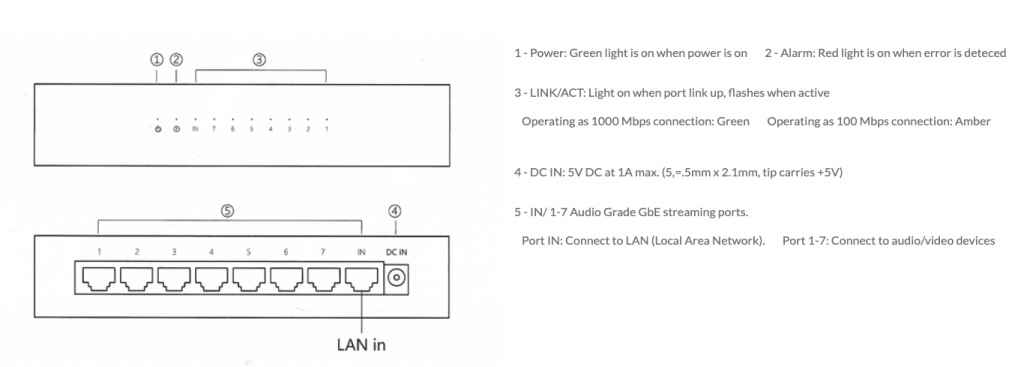
The ‘medical grade’ SMPS (Switch Mode Power Supply) that comes with the English Electric is also ‘quieter’, and thus ensures less high-frequency contamination of the power supply. The 8 RJ45 inputs are located in their own metal block housing, in addition to the internally regulated 5 Volt DC input. From the point of view of shielding I welcome this, but there is no mutual galvanic separation. The inputs themselves are internally filtered by means of four SMD coils for high-frequency interference signals and with SMD transformers (1 per twisted pair) they are galvanically separated from the internal circuit. The housing of the 8Switch is milled from a single block of aluminum and the bottom plate, which is also made of thick aluminum, is fitted without a gap, so it is better shielded against RFI than the Bonn N8, which has holes in the side of its (metal) housing.
English Electric writes in the accompanying documentation about the supplied ‘medical grade’ SMPS that it is not necessary to buy a (expensive) linear power supply for this switch. In fact, most linear power supplies are not fast enough to operate at the gigabit level, according to the 8Switch’s manual. Indeed, it is true that a well-designed SMPS outperforms a linear power supply in some circuits. I have had very well thought-out devices that had both types of power supplies on board, SMPS for the digital part and Linear for analog.
Anyway, the included wall wart feels solid, but it has a pretty bright green LED that burns quite loudly. If this food is in sight, it will disturb you, at least I am. But that’s what I think black Edding markers were invented for. I did not use a linear power supply to test things in practice, but I did compare the included power supply with the 5 Volt iFi iPower that normally supplies my D-Link switch with battery-clean power. More on that further on.
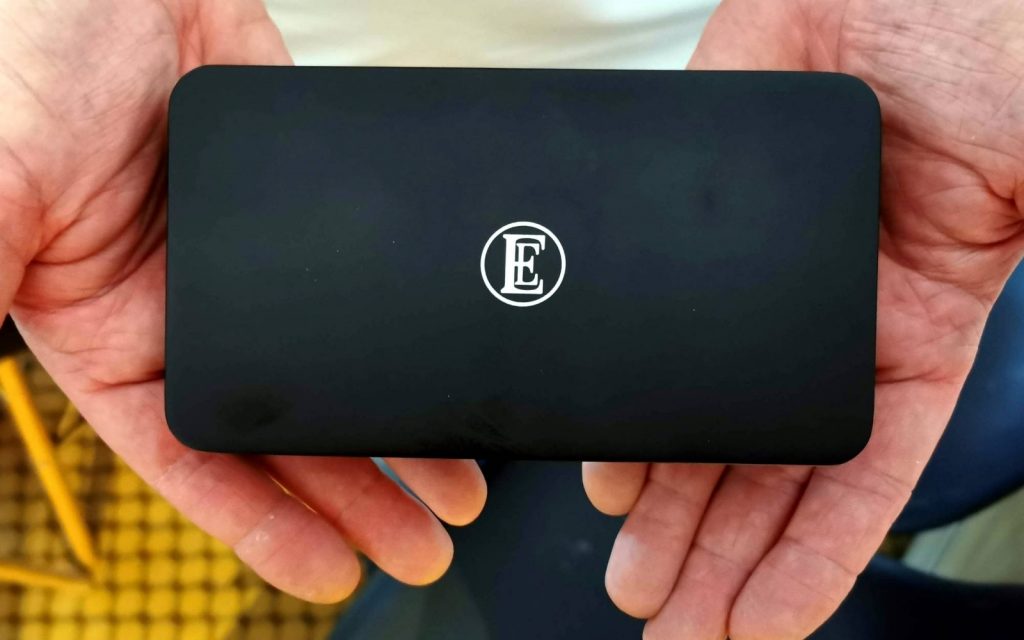
The appearance of the 8Switch deserves a special, honorable mention. The ‘soft touch’ black lacquered cabinet stands on special damping feet and looks beautiful. The very small holes on the front, which hide the 10 LEDs that respectively indicate whether it is on, whether something is wrong and which ports are in use for which data rate (amber for 100 Mb / s and green for 1000 Mb / s ) let in just enough light to see if the LED is on, and then you also have to sit right in front of it. You can simply place this switch in your hi-fi furniture without the risk that the flashing LEDs will get on your nerves. Bravo!
Listening with the English Electric 8Switch
Because I was one of the first to have an early production copy of the 8Switch earlier this year for another article, I thought I already knew a bit about what to expect, but because I seemed to have bought a new streamer shortly after that sleepover a renewed acquaintance I wish for this review. After all, the ‘wisdom’ prevailing on forums and in social media groups says that streamers who have their galvanic shielding and their data integrity in order will benefit less from an audiophile switch. So I wanted to hear that with my own ears.
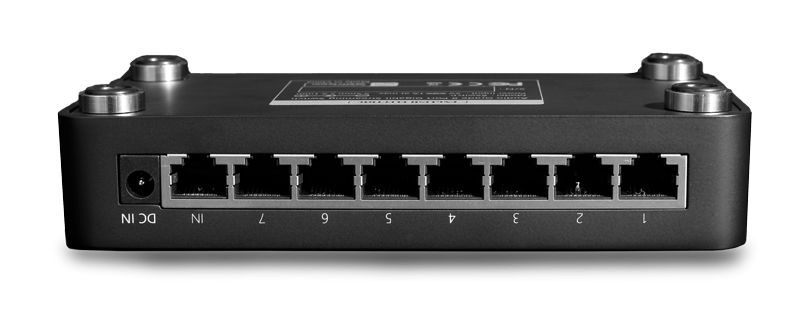
The English Electric took the place of my D-Link switch with iFi iPower power supply. My entire network is wired with AudioQuest Forest CAT700 cabling with Telegärtner connectors and from the switch to the streamer I use an AudioQuest Vodka CAT7 ethernet cable. The streamer on duty was my new Auralic Altair G1, operated alternately via the excellent own Lightning DS app and Roon. The interconnects (Water), speaker cables (William Tell Zero) and power cords (Monsoon and Blizzard) were also from AudioQuest and the PrimaLuna EVO 400 Integrated equipped with KT88 power tubes (with a pair of very special Hungarian ECC82’s in the pre-stage) sent my Kharma Ceramic prototypes flanking the Creaktiv audio furniture.
I had received a recorded copy of the 8Switch from importer Latham Audio. I know there are also a lot of opinions about responding, but I have to believe in it because I hear the difference. However, the very long response times that high-end brands like to mention with their electronic products are often grossly exaggerated. A morning and afternoon internet radio had to provide the right warm-up and in the evening I sat down for it. As I said before, based on forum folklore, I expected the improvement in combination with my Auralic Altair G1 to be smaller than earlier this year with the Bluesound Node2 and the NAD M51 da converter, but gosh, what the step forward was NOT say subtle! The listening experiences described below were gained over a period of more than two weeks,
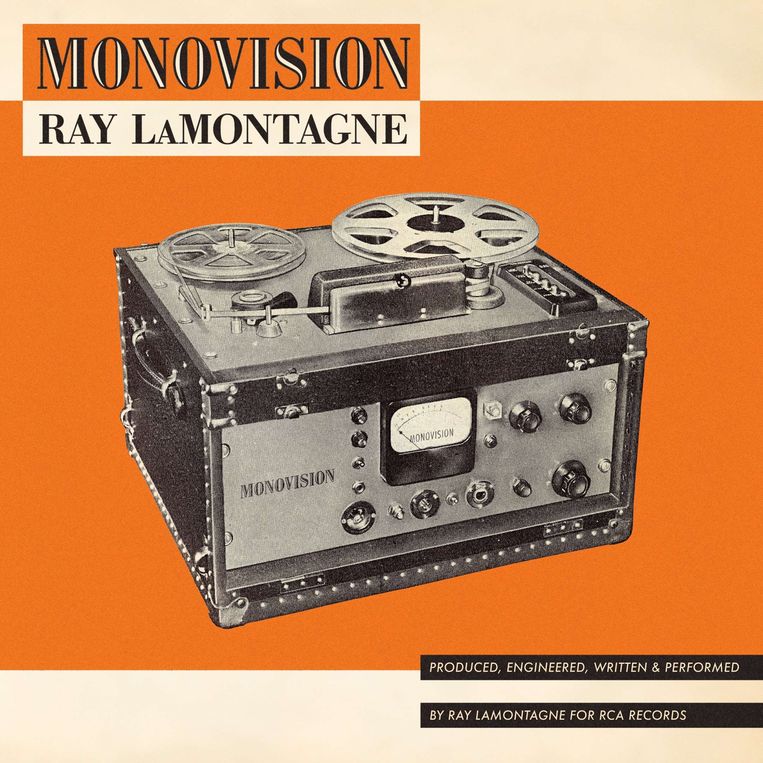
The first album that lends itself perfectly to show the differences is the beautiful Monovision, by the golden bearded bard Ray LaMontagne. This recording, full of acoustic instruments and with a beautifully captured natural reverb, not only showed more timbre and texture, but the spatial image also became larger. The attack of the plucked guitar strings was sharper and faster with the 8Switch and the shaker that was buried quite deep in the left channel with the D-Link switch suddenly stood a meter in front of the speaker. Do you know those moments when you put the remote away because you want to listen to the rest of the album undisturbed and unhurried? That was such a moment. Another album that got an extra dimension was the truly fantastic recorded second album by none other than Bob LudwigUnifony , a project by the Dutch drummer / percussionist Minco Eggersman and producer Theodoor Borger. This album is not so much about songs, but about atmospheric sketches colored in with pastel shades.

With the iFi iPower
The warning about the use of a linear power supply included in the manual has now been superseded by one of the competing brands – which had the same financial reassurance in the manual – due to the advent of a linear power supply equipped with fast bipolar FETs, but because this review about English Electric, I’ve suppressed the ardent desire to borrow such a power supply from that other brand in a truly epic way. That iFi iPower, however … Well, I already had that ‘quieter than a battery’ SMPS for the D-Link switch.
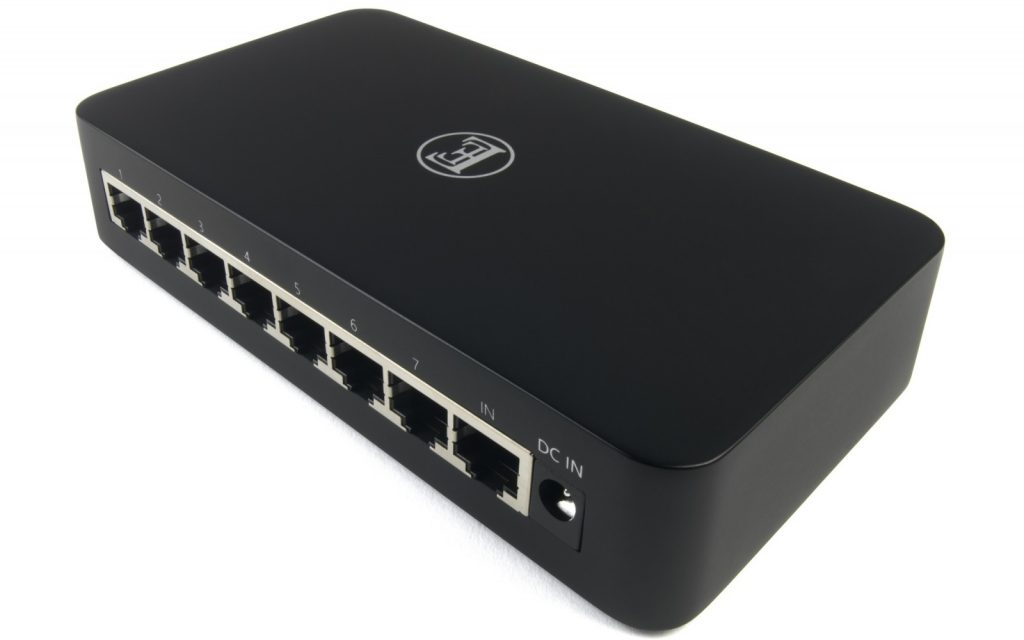
During my first acquaintance with the 8Switch I had some difficulty hearing and explaining the difference between the ‘medical grade’ and the ‘iFi’, at this second acquaintance there was no longer any doubt. The iFi drew even more precise lines and let the light shine further into the corners of the recording space, gave acoustic instruments in particular just a touch more color and texture and let the music flow even more smoothly. The difference was smaller than between the D-Link and the 8Switch, but for the additional cost of the iPower I think it’s absolute no-brainer.
Internet radio
One last misconception I’d like to clear up is that “the better the signal, the greater the audible differences.” That in itself seems very logical; if you want to hear more resolution, it must be present in the listened files. But that turns out not to be true. Of course it was a pleasure to enjoy the hi-res files of Ray LaMontagne and Unifony II, but the heavily compressed internet radio bandwidth of only 128kbps on average turned out to be extremely sensitive to the improvements that the 8Switch brings. From the maniacal cacophony of Shirley & Spinoza Radio, my most favorite internet radio station of all time, to the middle of the road quality pop of Radio Paradise, and from the finely curated selection of Polish radio station Audiophile Baroque to the freaky tweak of Fusion101, the music sounded livelier, smoother and more colorful than with the D -Link switch.
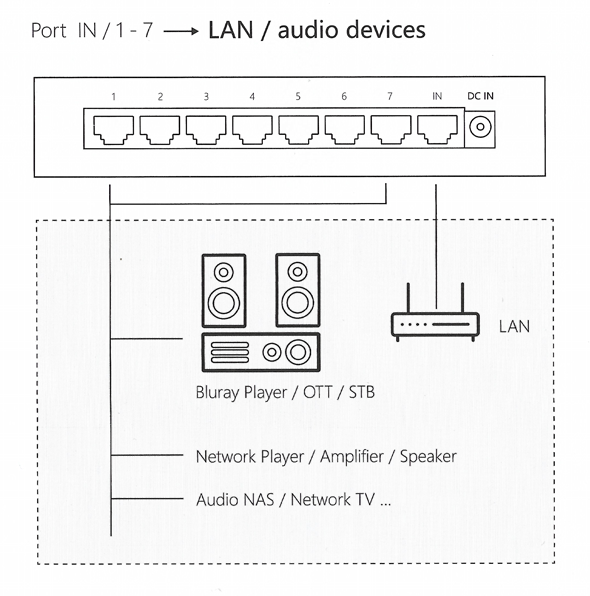
Finally…
The conclusion is actually several paragraphs, the English Electric 8Switch works, and works well. So good in fact that – partly because of the beautiful but also extremely functional housing and the included C-Stream Ethernet cable – I award it the maximum star rating. Moreover, I see no other option for myself than to ‘switch’ (sorry, I could not resist …), back to the D-Link was too disappointing. I have not directly compared it with other audiophile switches, on the one hand because it is even more difficult to keep my own taste out of the equation, but on the other hand because I wanted to highlight the intrinsic qualities of this switch compared to a standard switch that you for a few bucks from any online computer grocer.
The key question is therefore whether I think the English Electric 8Switch is worth the price, and the answer is a resounding yes. With the minimal side note that I now – compared to my first encounter through another streamer – noticed a greater improvement, but that it is therefore logical that the impact of an audiophile switch in a different setup can also be a bit smaller . When in doubt, try to find a dealer who is willing to give you such a thing home for a few days to try it for yourself. However, count your pennies in advance, because there is a good chance that he will not go back.
PLUS POINTS of English Electric 8Switch
- Really sounds better than a standard switch
- Nice appearance
- No nervous blinking lights
- Included C-Stream Ethernet cable
- Can still be upgraded with better nutrition
- Belongs to the more affordable peers
MINUSES of English Electric 8Switch
- But still quite a lot of money for a switch
- Result may depend on your setup
- Trying it out at home is therefore a must
- Some people think you are crazy
